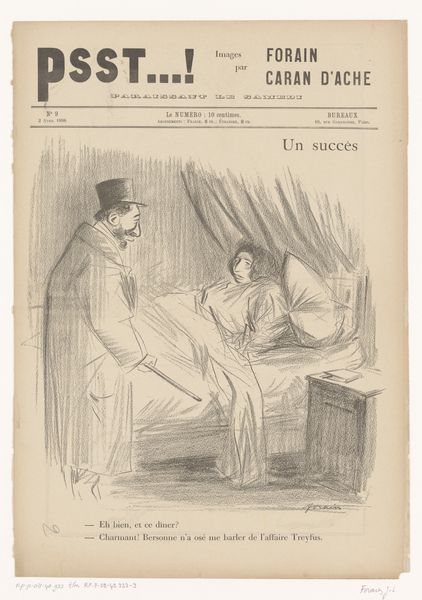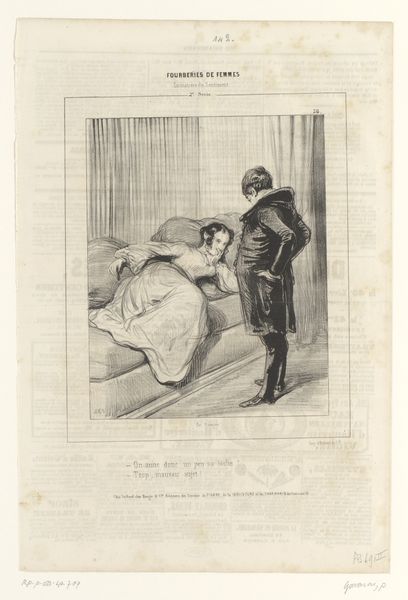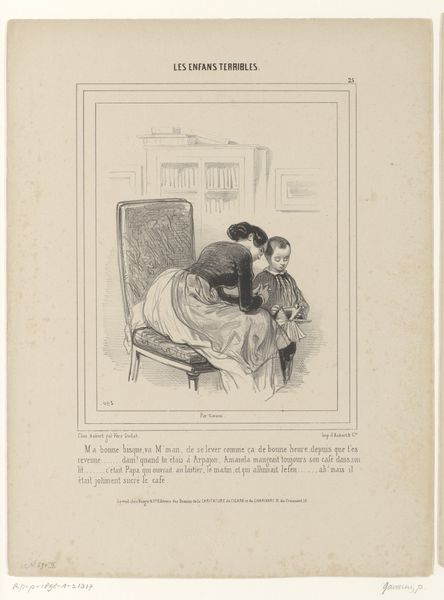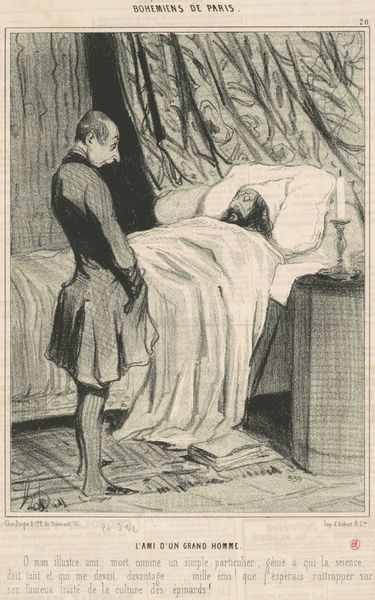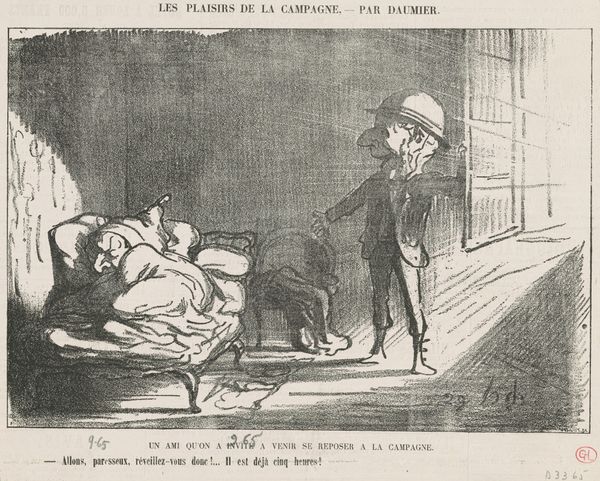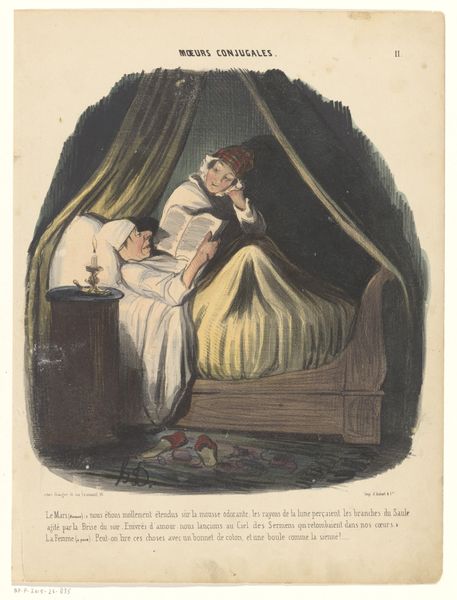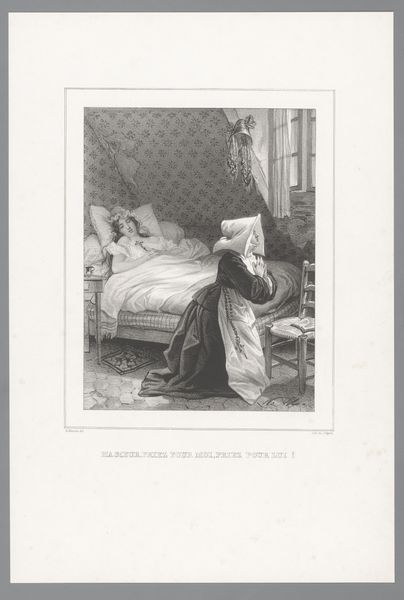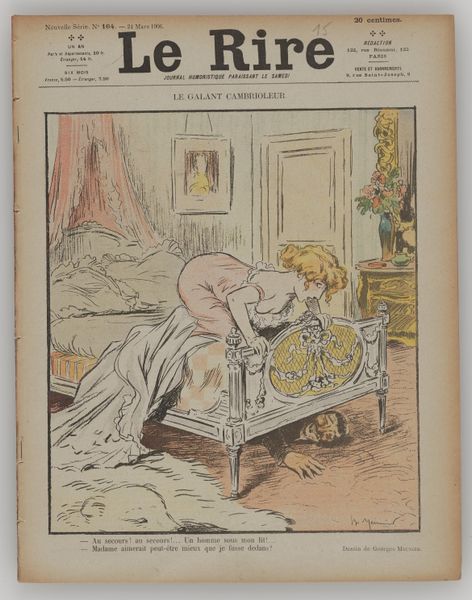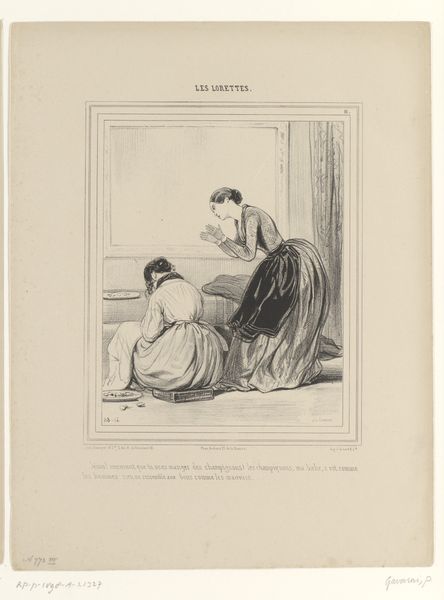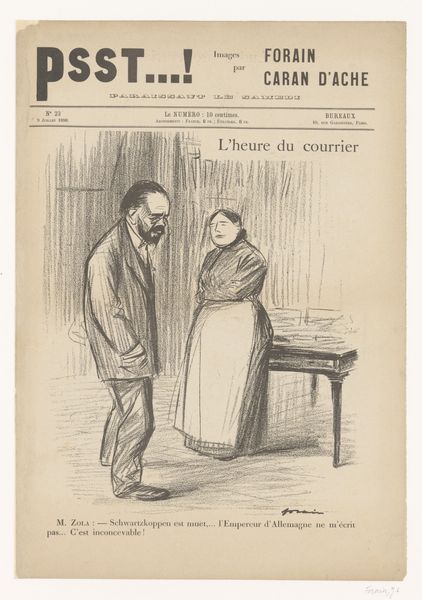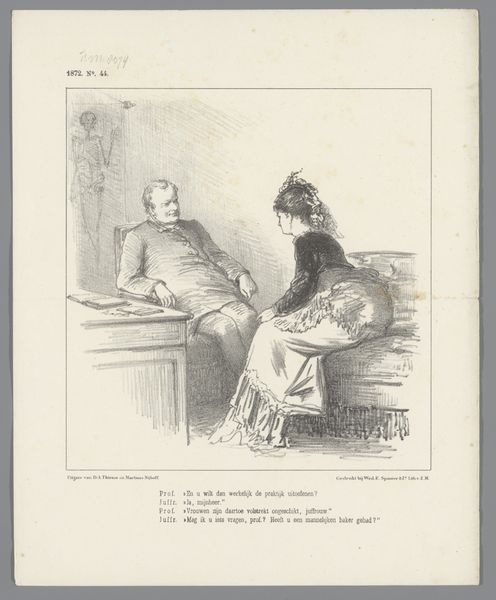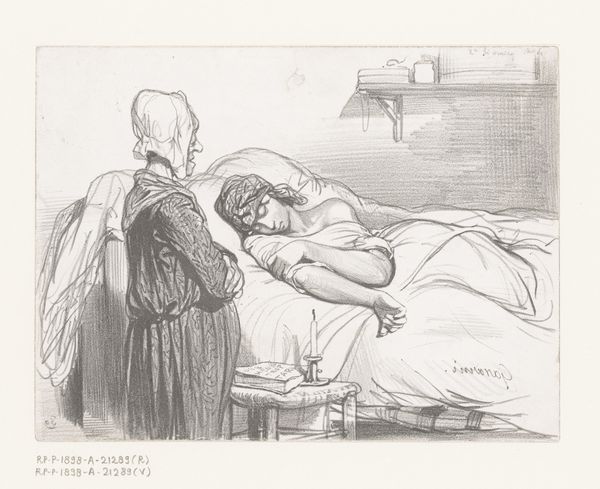
Dimensions: height 400 mm, width 281 mm
Copyright: Rijks Museum: Open Domain
Editor: This print by Jean-Louis Forain, titled "Man keert terug bij zijn zieke vrouw en kind," or “Man Returns to His Sick Wife and Child," was created in 1898 using graphite. It strikes me as intensely bleak. There's a palpable sense of poverty and illness. What social commentary do you see embedded in this piece? Curator: This work vividly reflects the social realities of late 19th-century France, a period marked by significant disparities in wealth and access to healthcare. Forain, known for his engagement with social issues, used his art to critique the bourgeois society and highlight the plight of the working class. Notice how the title mentions an "Enquête de l'Assistance Publique", literally "Public Assistance Inquiry." This draws attention to the role of public institutions in addressing poverty and health crises, questioning their effectiveness or potential indifference. Editor: It's like Forain is saying something about institutional failures. Do you think this print was meant to instigate any specific social reform? Curator: Prints like this often aimed to stir public consciousness and potentially influence policy by exposing harsh realities. Consider the format: the print was published within "PSTT…!", a satirical weekly, thus targeting the readers to engage with this critical message while challenging the conventional portrayals of the less privileged often overlooked by the mainstream media. What impression do you get from the facial expressions? Editor: The man seems stoic, almost resigned. The child is wary. They're both dwarfed by the situation and this looming figure, the woman motionless in the bed. They highlight how sickness impacts the family, right? Curator: Precisely. Forain is emphasizing not just individual suffering, but its ripple effects on the entire family unit and the broader societal structure. This family looks absolutely shattered, needing social safety nets. Forain used his visual commentary to advocate change. Editor: This artwork is much more than what I thought at first, thank you! I am looking forward to studying more artists from this period. Curator: And I am confident your knowledge of the societal issues impacting that time will greatly enhance your interpretations of artworks like this.
Comments
No comments
Be the first to comment and join the conversation on the ultimate creative platform.
